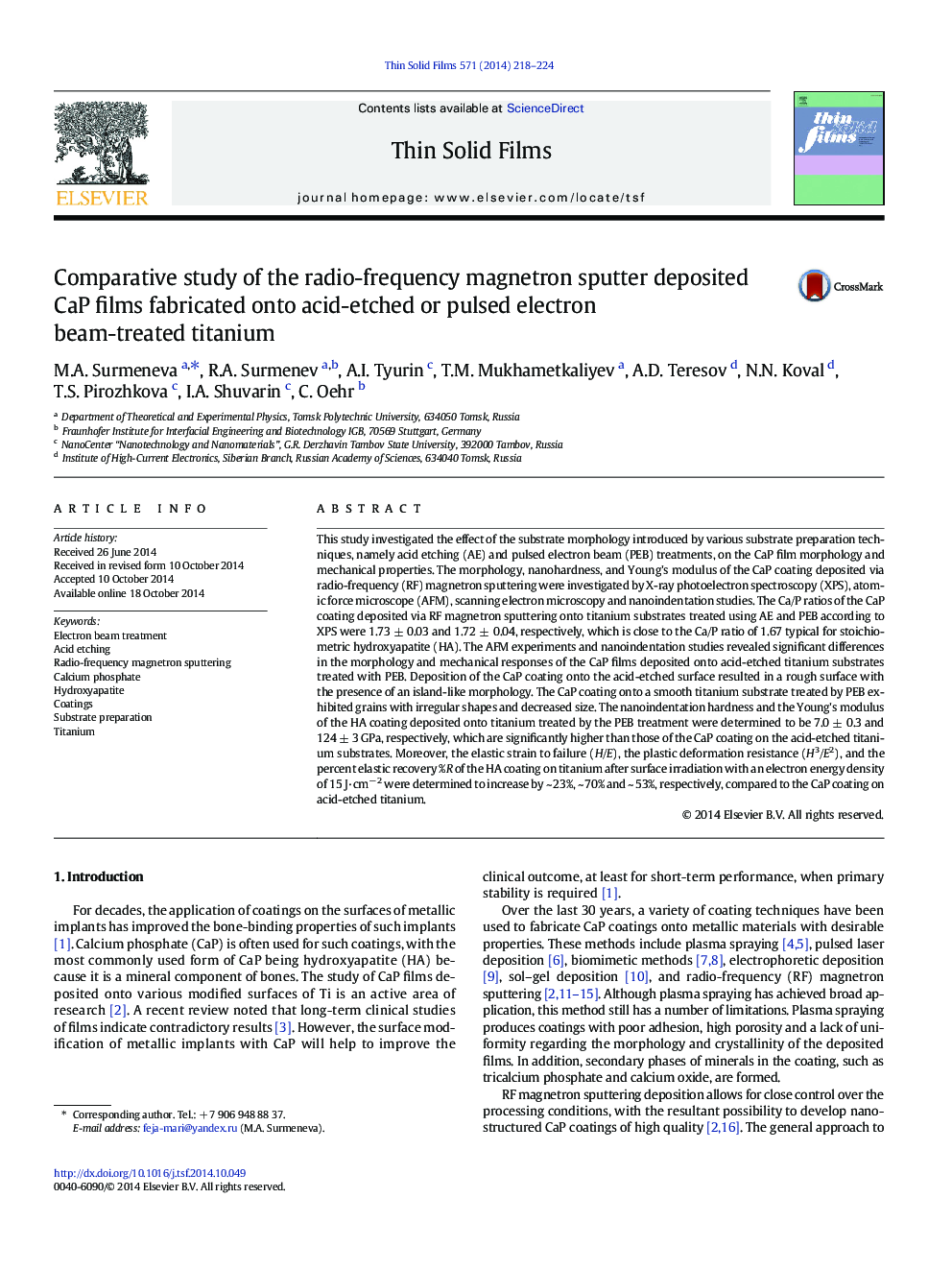| Article ID | Journal | Published Year | Pages | File Type |
|---|---|---|---|---|
| 1665094 | Thin Solid Films | 2014 | 7 Pages |
•Island-like morphology of calcium phosphate coating on titanium was observed.•Electron beam treatment of titanium resulted in surface smoothing of the coating.•Effect of electron beam treatment of titanium on the film nanohardness was revealed.•Enhanced resistance to plastic deformation for the coated titanium was observed.
This study investigated the effect of the substrate morphology introduced by various substrate preparation techniques, namely acid etching (AE) and pulsed electron beam (PEB) treatments, on the CaP film morphology and mechanical properties. The morphology, nanohardness, and Young's modulus of the CaP coating deposited via radio-frequency (RF) magnetron sputtering were investigated by X-ray photoelectron spectroscopy (XPS), atomic force microscope (AFM), scanning electron microscopy and nanoindentation studies. The Ca/P ratios of the CaP coating deposited via RF magnetron sputtering onto titanium substrates treated using AE and PEB according to XPS were 1.73 ± 0.03 and 1.72 ± 0.04, respectively, which is close to the Ca/P ratio of 1.67 typical for stoichiometric hydroxyapatite (HA). The AFM experiments and nanoindentation studies revealed significant differences in the morphology and mechanical responses of the CaP films deposited onto acid-etched titanium substrates treated with PEB. Deposition of the CaP coating onto the acid-etched surface resulted in a rough surface with the presence of an island-like morphology. The CaP coating onto a smooth titanium substrate treated by PEB exhibited grains with irregular shapes and decreased size. The nanoindentation hardness and the Young's modulus of the HA coating deposited onto titanium treated by the PEB treatment were determined to be 7.0 ± 0.3 and 124 ± 3 GPa, respectively, which are significantly higher than those of the CaP coating on the acid-etched titanium substrates. Moreover, the elastic strain to failure (H/E), the plastic deformation resistance (H3/E2), and the percent elastic recovery %R of the HA coating on titanium after surface irradiation with an electron energy density of 15 J·cm− 2 were determined to increase by ~ 23%, ~ 70% and ~ 53%, respectively, compared to the CaP coating on acid-etched titanium.
